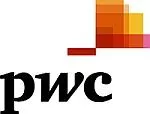The Central Bank of Nigeria ("CBN") recently released a circular establishing an Investors and Exporters Foreign Exchange Window (the "New Window") separate from the current official inter-bank foreign market. The purpose of this new window is to improve foreign exchange liquidity. This is in addition to the SME window recently introduced by the CBN.
We have highlighted below, some of the provisions and implications of the new circular.
Exchange Rate: Unlike the general official interbank market, the rate at the New Window will be market determined based on the forces of demand and supply, and will not be set by the CBN. The CBN may however intervene as a buyer or seller. This in effect means that the rate is subject to indirect control rather than 'fixing' by the CBN.
The FMDQ is required to publish indicative daily average rates on its website twice a day (9am and 4pm). In addition, the FMDQ is required to develop and publish a new fixing called the Nigerian Autonomous Foreign Exchange Fixing ("NAFEX") separate from the Nigerian Interbank Foreign Exchange Fixing ("NIFEX")
Permitted Transactions: Generally, all invisible transactions including capital repatriation by foreign investors, loan repayment, payments for agreements registered with the National Office for Technology Acquisition and Promotion, personal home remittance and other miscellaneous transactions set out in memorandum 15 of the Foreign Exchange Manual.
International airlines ticket sales remittances are however excluded from the New Window, they are to access the CBN FX Window Secondary Market.
Imports (including petroleum products) will continue to be transacted on the current inter- bank market.
All documents required for permitted transactions will still apply in the New Window.
Participants: Participants in this Window includes exporters, portfolio investors and authorised dealers. It is not clear from the Circular whether oil companies are permitted to use the New Window. We understand however that banks have received information from the CBN that oil companies are not permitted to use the New Window.
OTC FX Futures: Futures will continue to exist in the New Window. Investors that have existing Naira settled OTC FX Futures Contracts (April 2017 – March 2018) have the choice to choose between settling at the NAFEX rate and the NIFEX rate i.e. at the New Window or current inter-bank market.
Investors that choose to settle at the NAFEX rate shall not be able to access the NIFEX rate/current interbank market to settle the underlying eligible transaction. Investors who however choose the NIFEX rate will have access to both the New Window and the current inter- bank market. Whatever option is elected by the investor shall apply to all their existing futures contracts.
Investors have 40 days from the date of the Circular (21 April 2017) to decide which rate to choose. FX Futures Contracts after the release of the circular will be settled at the NAFEX rate.
Takeaway
This initiative is expected to help ease the demand for foreign currency in the parallel market and reduce the downward pressure on Naira exchange rate. The main concern however is that the CBN may intervene in order to regulate the rate, thereby "managing" the m rket determined rates.
The content of this article is intended to provide a general guide to the subject matter. Specialist advice should be sought about your specific circumstances.


